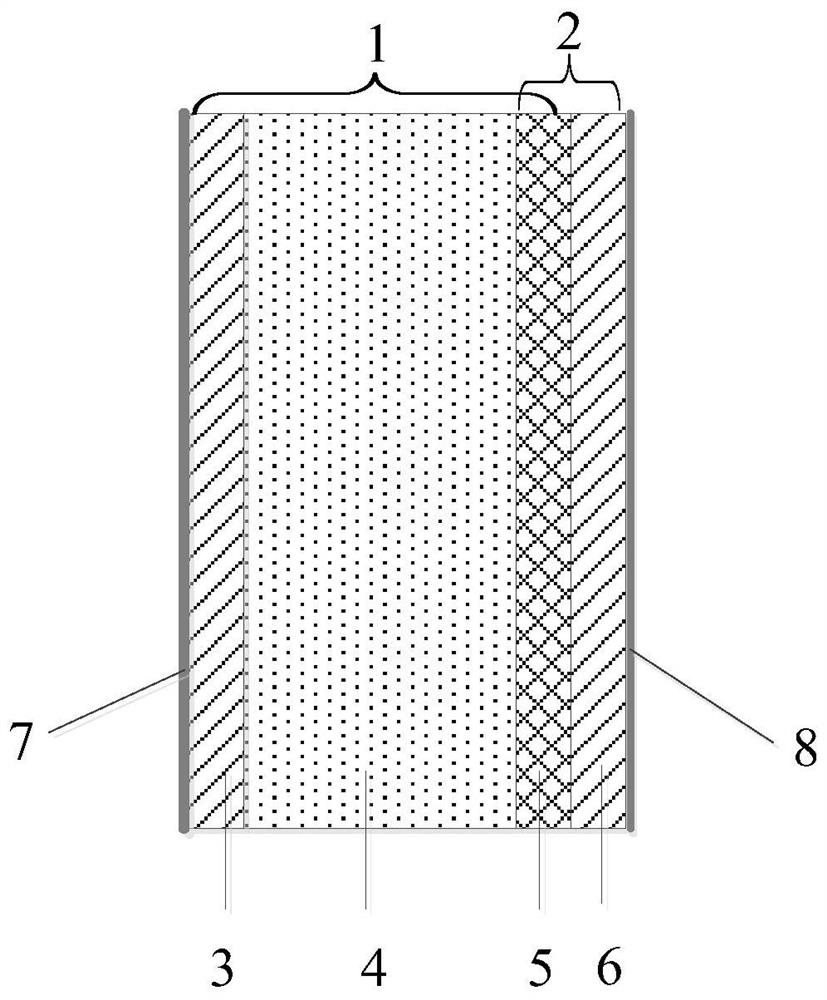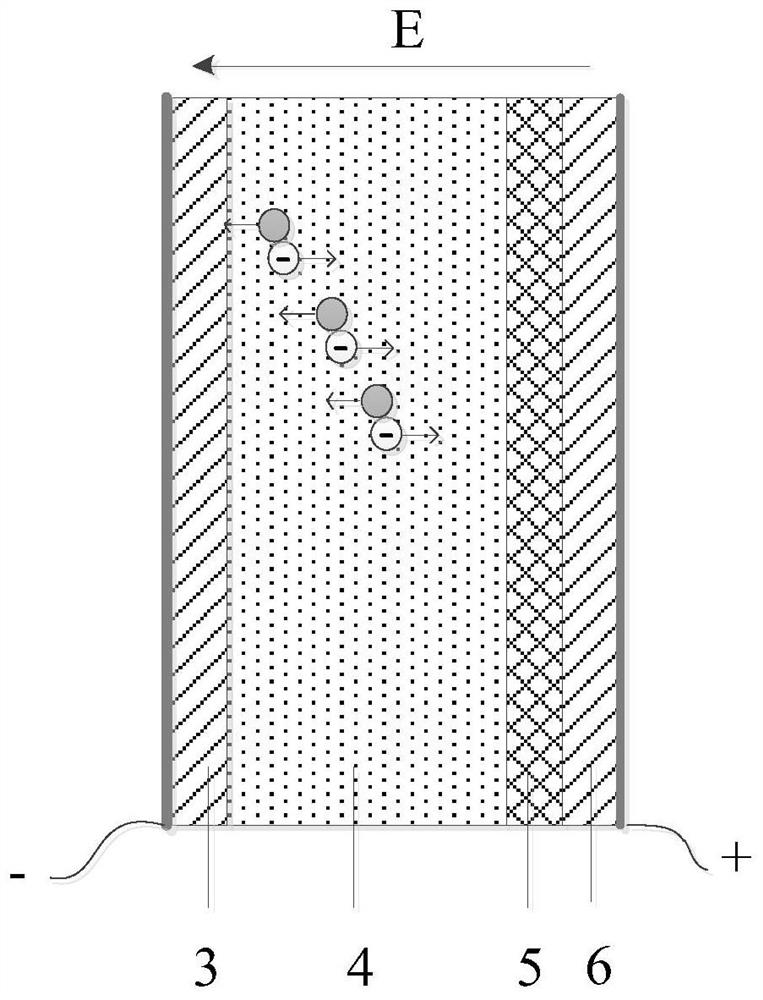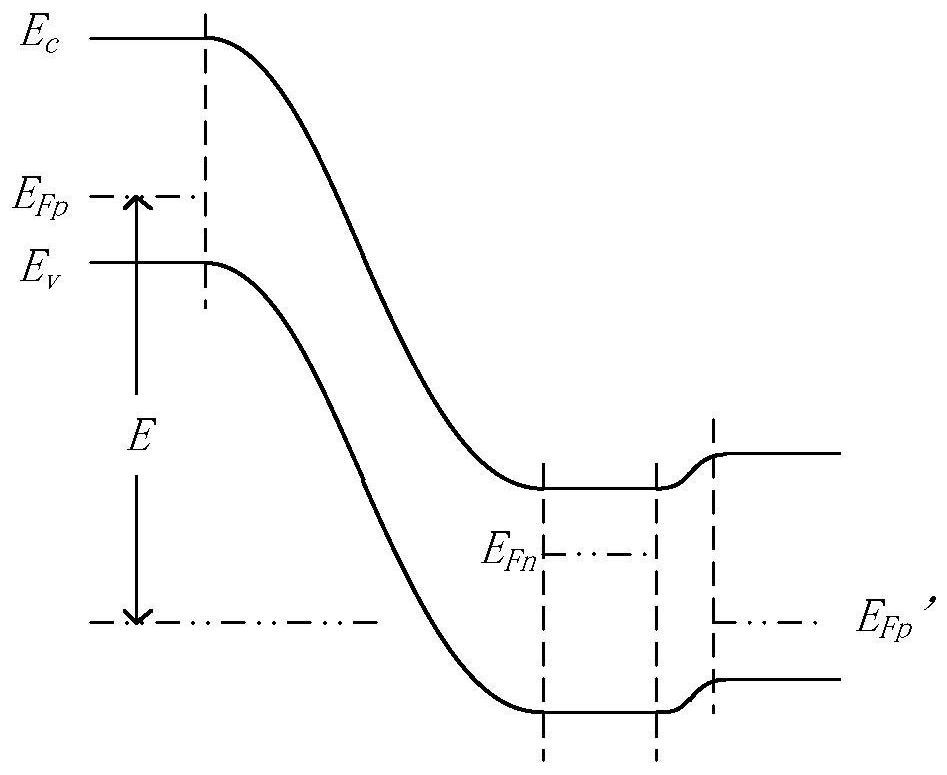Active semiconductor nuclear radiation detector for converting nuclear radiation into luminescence
A semiconductor and N-type semiconductor technology, applied in the field of nuclear radiation detection, can solve the problems of slow decay time, low luminous efficiency, difficult to control, etc., and achieve the effect of improving the overall efficiency, high luminous efficiency, and high-efficiency conversion
- Summary
- Abstract
- Description
- Claims
- Application Information
AI Technical Summary
Problems solved by technology
Method used
Image
Examples
Embodiment Construction
[0029] Now in conjunction with embodiment, accompanying drawing, the present invention will be further described:
[0030] The electro-optic coupling nuclear radiation detection device of the embodiment of the present invention has a main body structure of a flat plate, which is composed of a PIN structure 1 and an LED light-emitting diode 2 connected in series, both of which share an N layer or a P layer. It is characterized in that, if the N layer is shared, the PIN structure 1 is composed of P-type semiconductor material 3, intrinsic semiconductor material 4 and N-type semiconductor material 5; the LED light-emitting diode 2 is composed of N-type semiconductor material 5 and P-type semiconductor material Material 6 composition. Multiple layers of different types of semiconductor materials are stacked to form a PINP structure, and electrodes 7 and 8 are respectively fabricated on the surface of the device.
[0031] The PIN structure 1 and the LED light-emitting diode 2 are ...
PUM
| Property | Measurement | Unit |
|---|---|---|
| Thickness | aaaaa | aaaaa |
| Thickness | aaaaa | aaaaa |
Abstract
Description
Claims
Application Information
 Login to View More
Login to View More - R&D
- Intellectual Property
- Life Sciences
- Materials
- Tech Scout
- Unparalleled Data Quality
- Higher Quality Content
- 60% Fewer Hallucinations
Browse by: Latest US Patents, China's latest patents, Technical Efficacy Thesaurus, Application Domain, Technology Topic, Popular Technical Reports.
© 2025 PatSnap. All rights reserved.Legal|Privacy policy|Modern Slavery Act Transparency Statement|Sitemap|About US| Contact US: help@patsnap.com



